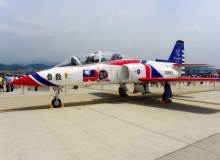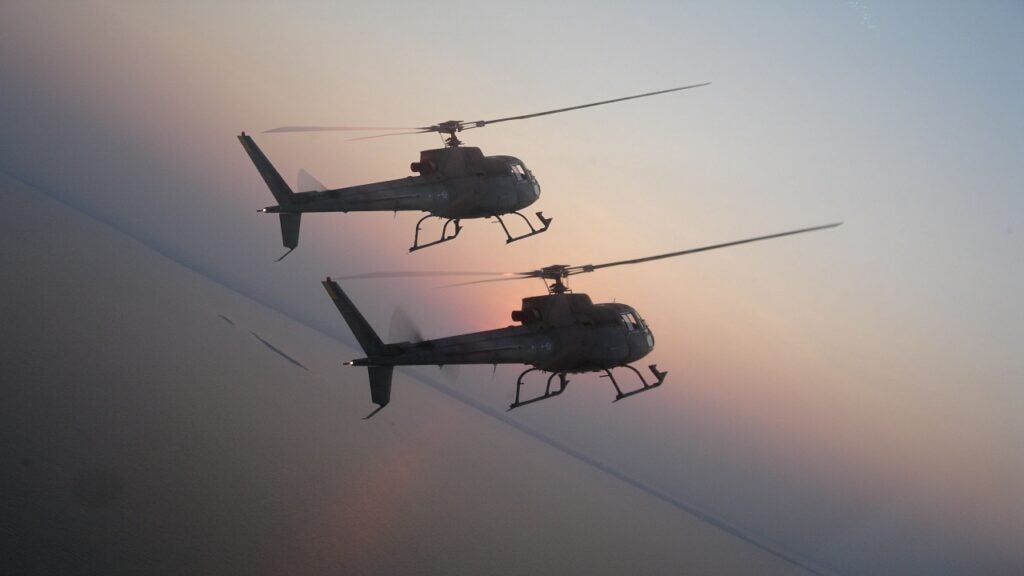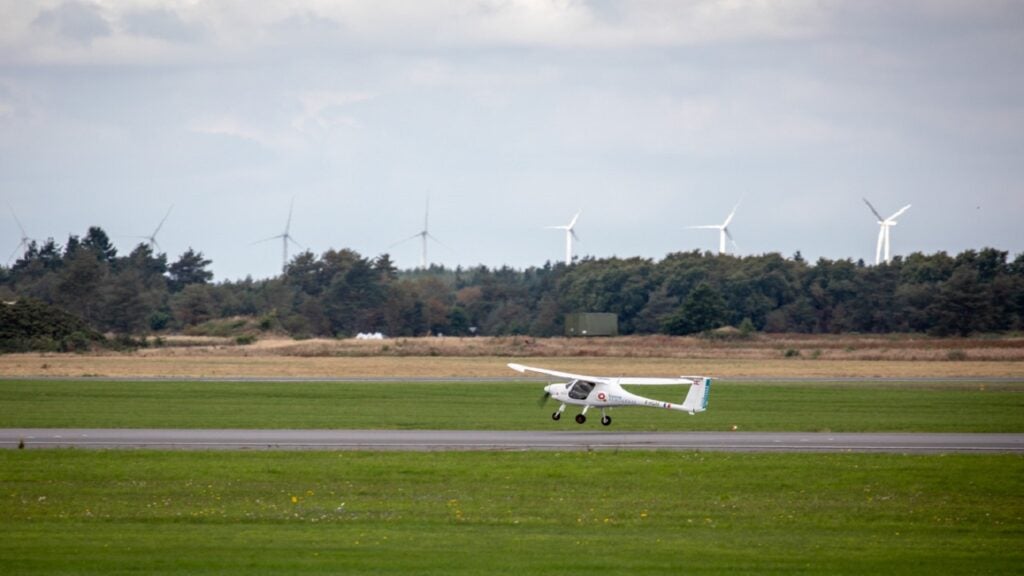
The AT-3 is a two-seater modern trainer or ground attack aircraft designed and manufactured by China-based Aerospace Industrial Development Corporation (AIDC) for the Republic of China Air Force (ROCAF). Approximately 62 AT-3s were built between 1984 and 1990. The aircraft has been in service since 1986.
Variations of the AIDC AT-3 jet trainer
The AT-3 was produced in four variants, namely XAT-3, AT-3A, AT-3B and XA-3.
XAT-3 is the first prototype built in two-seater configuration. AT-3A is a modern jet trainer / light attack aircraft built for deployment with ROCAF. AT-3B is an upgraded version of AT-3A and is equipped with APG-66T radar and head up display.
XA-3 is a single-seat ground attack aircraft. It can carry HF-2 air-launched anti-ship missile. The variant is currently out of service.
Development of the AT-3 aircraft
The development history of AT-3 dates back to March 1975 when AIDC decided to replace the T-33 because of the T-33’s long service and outdated functionality. AIDC in cooperation with US Northrop Aircraft submitted the evaluation plan to replace the T-33.
The US government however denied the co-operation project, as a consequence of which AIDC began research and development of the aircraft on its own.
AIDC manufactured the first prototype, named XAT-3, in July 1980 and conducted a successful flight test within two months, in September.
The US military approved the purchase of 50 AT-3 advanced trainers following the successful development of XAT-3. Production began in March 1982 and the aircraft entered service with ROCAF Academy’s Flight Training Command in 1986.
A mid-life update (MLU) was performed on the AT-3 during 2001-2006 to stretch the operational life of the aircraft to beyond 2016.
Design of the Chinese AIDC trainer aircraft
The AT-3 is of low wing monoplane design. The aircraft was designed to operate on dirt airstrips and short runways even in hostile environments.
It is equipped with two main fuel tanks and two external fuel tanks underneath the wings. The capacities of the main and external tanks are 1,630 litres and 1,136 litres respectively.
The wings and fuselage are constructed with light alloys, steel, magnesium and ultra-light graphite fibre composites to reduce the overall weight of the aircraft compared to conventional jet trainers.
Cockpit of Aerospace Industrial Development Corporation’s AT-3
The AT-3 features a fully digital glass cockpit enclosed by a bubble shaped canopy that opens rightward. The cockpit can conciliate two crew members, including trainee pilot and flight instructor in tandem seat configuration.
It is fitted with two zero by zero Martin Baker ten ejection seats. The rear seat is slightly raised by 0.3m to render clear visibility.
The cockpit is equipped with a head-up display, a radar display, Doppler radar, forward looking infra-red system, a radar warning receiver and voice over recorder. It also has communication and navigation equipment, inertial navigation system, UHF radio and standby compass.
The avionics suite installed in the AT-3 includes identification of friend or foe, tactical air navigation system, attitude and heading reference system, a global positioning system, distance measuring equipment, instrument landing system and angle of attack indicator.
Armaments and weaponry
The AT-3 is armed with 20mm cannon which can fire munitions at the rate of 250 rounds a minute. The aircraft has seven hardpoints, including four under its two wings, one under the centreline fuselage and two at the wingtips. It can carry 2,727kg of payload.
Other armaments attached include Mk 82, Mk84, Mk20 cluster bombs, rocket launchers, Sky Sword I, Tien Chien-1 and AIM-9 infrared-guided Sidewinder short range air-to-air missiles and HF-2 Mk 2 anti-ship missiles.
Garrett TFE731-2 engines
The AT-3 is powered by two Garrett TFE731-2 turbofan engines designed and built by Honeywell Aerospace.
Each engine produces 15.6kN of thrust. The engin features a single-stage high-pressure turbine, a three-stage low-pressure turbine, annular combustors, digital electronic engine control (DEEC) and a single centrifugal high-pressure compressor stage.
The engine is 1.27m long and has 1.0m diameter. The dry weight is 333kg.
The AT-3 can climb at the rate of 51.3m/s. The maximum and cruise speeds of the aircraft are 904km/h and 880km/h respectively. The range is 2,280km. The service ceiling is 14,650m.
The Global Military Aircraft Market 2011-2021
This project forms part of our recent analysis and forecasts of the global Military Aircraft market available from our business information platform Strategic Defence Intelligence. For more information click here or contact us: EMEA: +44 20 7936 6783; Americas: +1 415 439 4914; Asia Pacific: +61 2 9947 9709 or via email.




